Are Caracal Cats Good Pets? Discover the realities of caracal ownership, including their wild nature, care needs, and legal considerations, on PETS.EDU.VN. Learn why these exotic felines are best left in the wild and explore alternative domestic breeds with a wild appearance but a gentle temperament, ensuring responsible pet ownership and the well-being of these magnificent creatures.
1. Understanding the Caracal: A Wild Cat Unveiled
The caracal (Caracal caracal), often called the desert lynx despite not being a true lynx, is a captivating wild cat species found across Africa, Central Asia, India, and the Middle East. Recognizing its wild origins is crucial before considering it as a pet. With three subspecies, the Southern caracal (C. c. caracal), the Northern caracal (C. c. nubicus), and the Asiatic caracal (C. c. schmitzi), each adapted to their respective environments, these cats are characterized by their long legs, short tan or sandy coats, and striking, tufted ears.
While smaller than other wild cats, adult caracals typically weigh between 20 and 40 pounds, making them considerably larger than most domestic house cats. Despite their allure and the claims of some breeders selling them as pets, it’s essential to understand that caracals remain wild animals with inherent instincts that make them unsuitable for domestic life.
2. The Cat Family Tree: Where Caracals Fit
To understand why caracals aren’t ideal pets, let’s delve into the cat family, Felidae. This family divides into two subfamilies: Pantherinae, comprising the roaring big cats, and Felinae, encompassing smaller wild cats and our beloved domestic felines.
2.1 Pantherinae: The Roaring Giants
The Pantherinae subfamily includes iconic species like:
- Lion (Panthera leo)
- Tiger (Panthera tigris)
- Jaguar (Panthera onca)
- Leopard (Panthera pardus)
- Snow leopard (Panthera uncia)
- Mainland clouded leopard (Neofelis nebulosa)
- Sunda clouded leopard (Neofelis diardi)
These majestic creatures share the ability to roar due to their flexible hyoid bone, except for the snow leopard.
2.2 Felinae: The Purring Companions (and Not-So-Companions)
The Felinae subfamily boasts a diverse range of species, including:
- African wildcat (Felis lybica)
- Asian golden cat (Catopuma temminckii)
- Bobcat (Lynx rufus)
- Caracal (Caracal caracal)
- Cheetah (Acinonyx jubatus)
- Cougar or mountain lion (Puma concolor)
- Domestic cat (Felis catus)
- Jungle cat (Felis chaus)
- Leopard cat (Prionailurus bengalensis)
- Ocelot (Leopardus pardalis)
- Serval (Leptailurus serval)
Unlike the roaring Pantherinae, Felinae cats can purr thanks to their bony hyoids. While caracals share this trait with domestic cats, their wild instincts set them apart.
3. Caracals vs. Domestic Cats: A Tale of Two Worlds
Despite belonging to the same subfamily, caracals and domestic cats differ significantly in their suitability as pets. Caracals remain wild animals, retaining their natural instincts even when raised in captivity. Consider other Felinae members like cheetahs or cougars – while related to domestic cats, their wild nature makes them unsuitable as house pets.
The key difference lies in domestication. Domestic cats have co-evolved with humans for thousands of years, adapting to domestic life. Caracals, on the other hand, have not undergone this process, remaining wild animals with specific needs and behaviors that are difficult to meet in a domestic setting.
4. Why Caracals Don’t Make Good Pets: Unveiling the Challenges
While the idea of owning a caracal may seem exciting, wildlife experts strongly advise against it. Several factors contribute to this recommendation:
4.1 Unpredictable and Potentially Dangerous Behavior
Caracals, even those bred as pets, retain their wild instincts. These instincts can manifest as unpredictable and even dangerous behavior, particularly towards children, the elderly, or other pets. A caracal’s powerful jaws, sharp teeth, and claws can inflict serious injuries. ABC News reported a case where a mom and daughter were hospitalized after an exotic cat attack, highlighting the potential dangers of keeping wild animals as pets.
4.2 Territorial and Destructive Nature
Caracals are highly territorial and prone to destructive behaviors. They require specialized outdoor enclosures to ensure the safety of both the animal and the household. Normal caracal behaviors like scratching, spraying urine, and defecating in the open can cause significant damage within a home.
4.3 Veterinary Care Challenges
Finding a veterinarian willing and qualified to treat a caracal can be challenging. These cats require specialized preventive care, vaccinations, and treatment for potential injuries or illnesses. Owners may need to seek out exotic animal veterinarians, which can be expensive and require extensive travel.
4.4 Specialized Dietary Needs
Feeding caracals is both difficult and expensive. As obligate carnivores, they require a specific, specialized diet that may include raw meat. In the wild, their diet consists of birds, rodents, hyraxes, hares, and even small antelopes and gazelles. Replicating this diet in captivity is challenging and costly.
4.5 Welfare Concerns: A Life Unfulfilled
Perhaps the most compelling reason against keeping caracals as pets is their well-being. Wild animals like caracals thrive in their natural habitat, where they can express their natural instincts and behaviors. Unlike domestic cats, caracals are not adapted to cohabitating with humans and cannot fully express their natural behaviors in a domestic environment.
5. Legal Considerations: Navigating the Regulations
The legality of owning a caracal varies depending on your location. Some states allow the ownership of wild animals with a special license or permit, while others ban it altogether. Some states have no specific laws regarding wild animal ownership, but this doesn’t necessarily make it a wise choice. Always check local and state regulations before considering owning any exotic animal.
6. Wild Looks, Domestic Temperaments: Exploring Alternative Breeds
If you’re drawn to the exotic look of a caracal but understand the challenges and ethical concerns of owning one, several domestic cat breeds offer a similar aesthetic with a gentle and friendly temperament:
6.1 Pixie-Bob: The Bobcat Lookalike
The Pixie-Bob, despite claims of being a bobcat hybrid, is a fully domestic breed known for its bobbed tail and wild appearance. These loving, active, and social cats are often described as dog-like in their loyalty and affection.
| Feature | Description |
|---|---|
| Origin | United States |
| Height | 10-12 inches |
| Weight | 8-18 pounds |
| Lifespan | 13-16 years |
| Temperament | Loving, active, social, dog-like |
| Price | $1800 – $3000 |
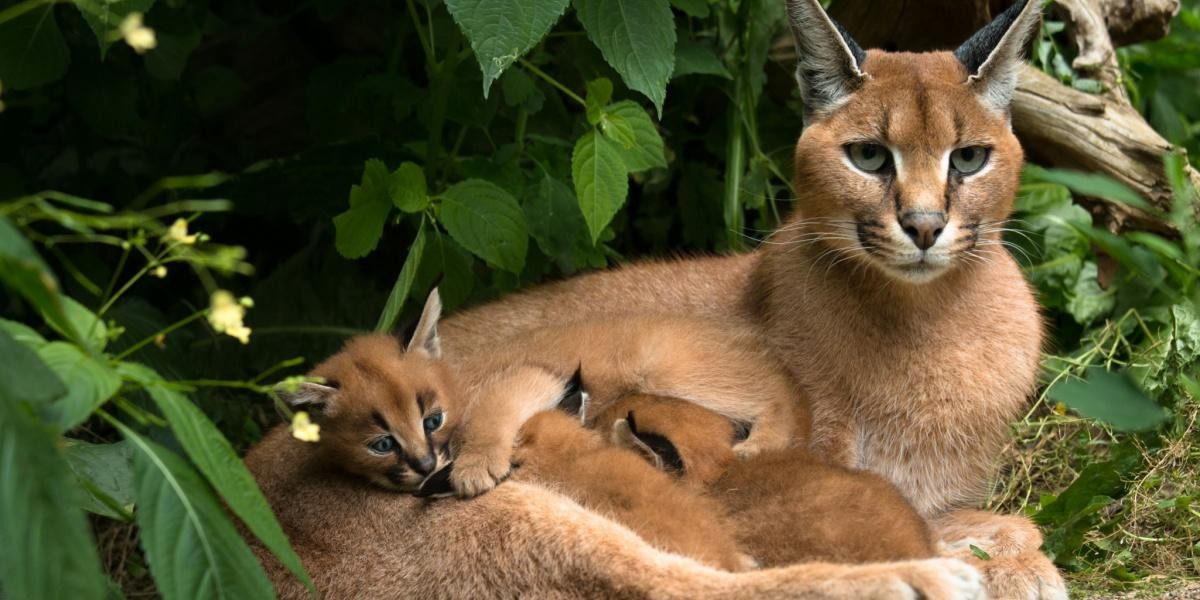

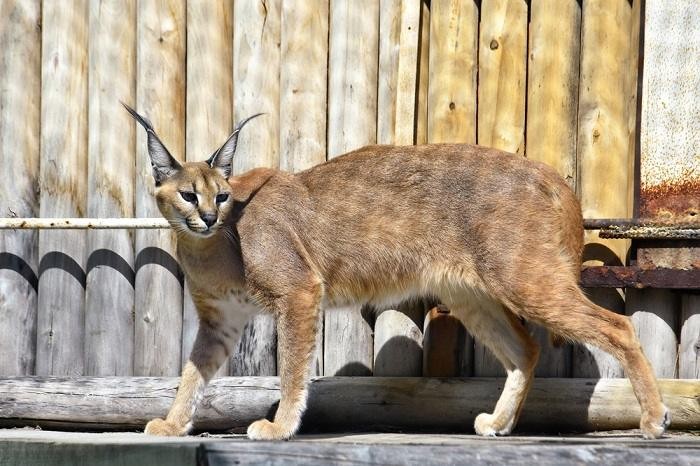
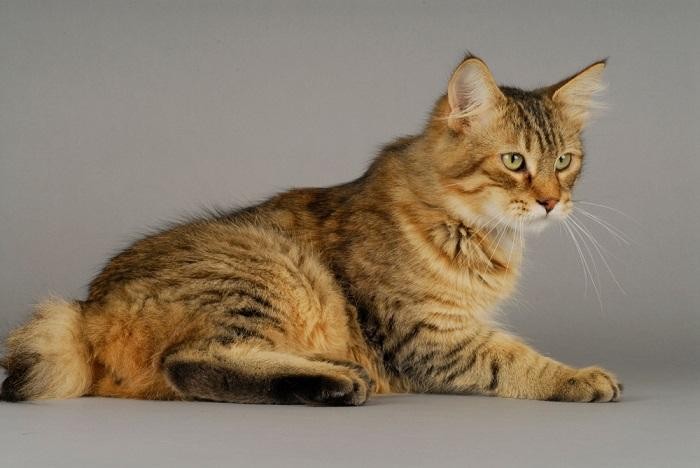
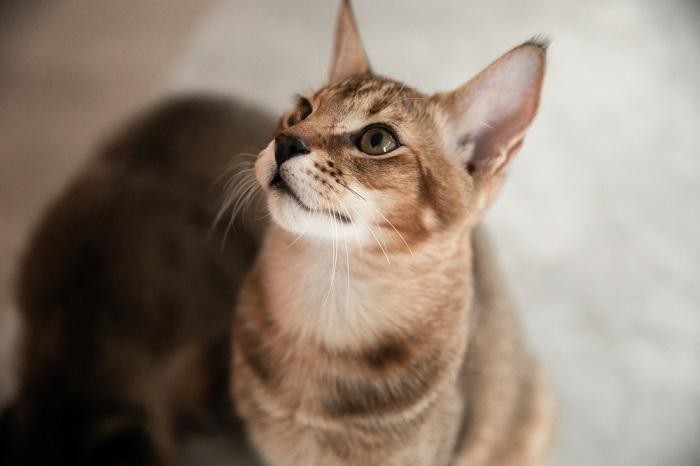
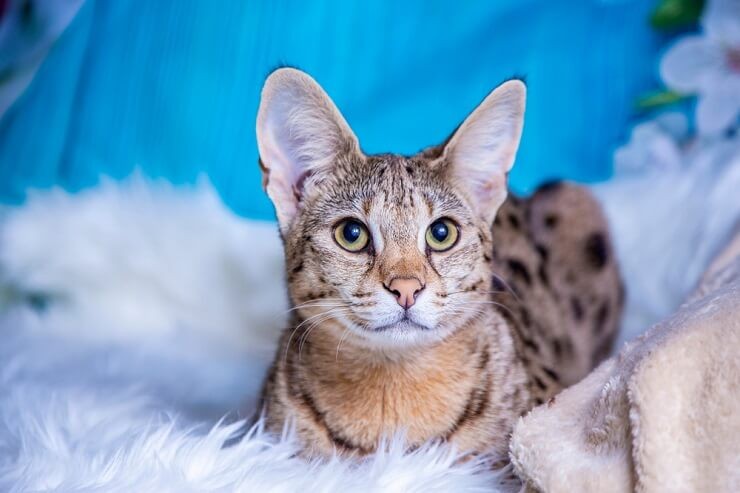
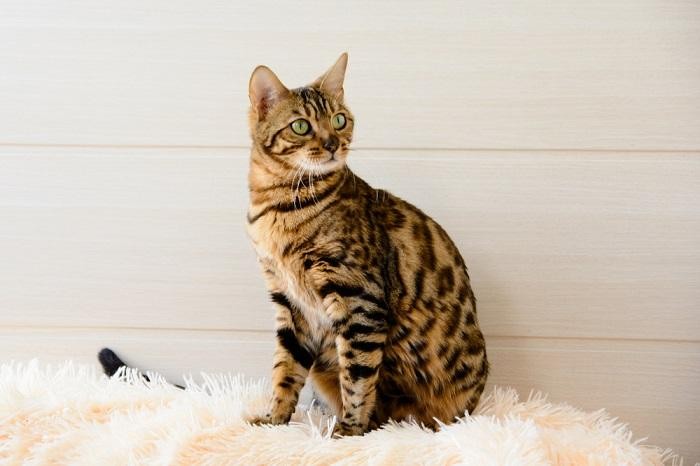
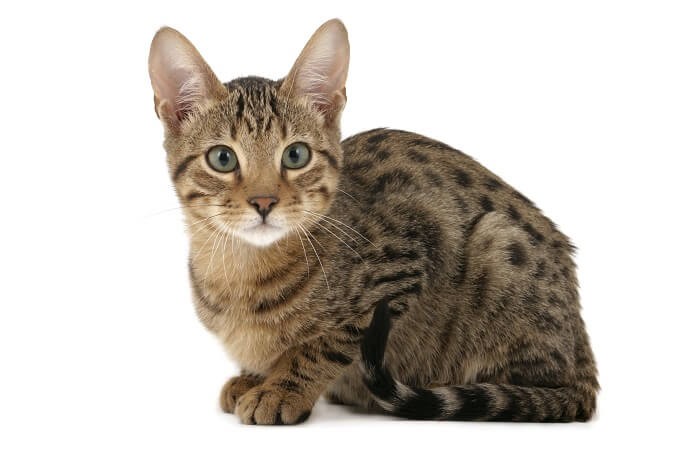
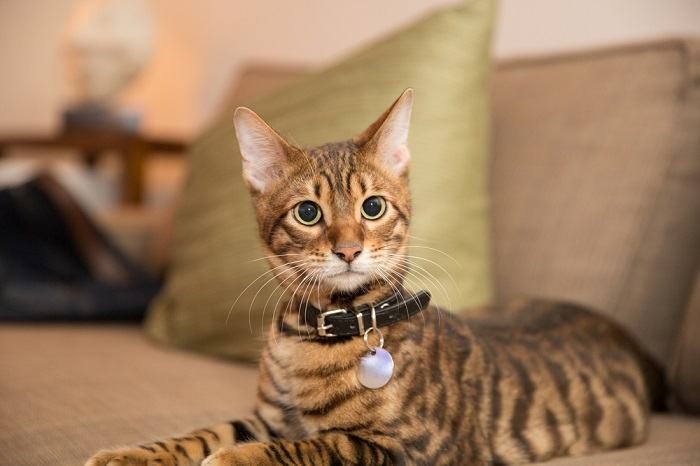
6.2 Chausie: The Jungle Cat Descendant
The Chausie, a hybrid breed resulting from crossing a jungle cat with domestic cats, boasts a sandy, reddish-brown, or grey coat reminiscent of the caracal. These active, athletic, and sociable cats are a great choice for those seeking a wild look with a domestic temperament.
| Feature | Description |
|---|---|
| Origin | Egypt, South Asia |
| Height | 14-18 inches |
| Weight | 12-25 pounds |
| Lifespan | 10-15 years |
| Temperament | Active, athletic, sociable |
| Price | $500-$2500 |
6.3 Savannah: The Serval’s Miniature
The Savannah, a hybrid breed created by crossing African servals with domestic cats, features a slender body, small head, and large ears similar to its wild ancestor. These curious, outgoing, and assertive cats require plenty of exercise and mental stimulation.
| Feature | Description |
|---|---|
| Origin | United States |
| Height | 10-13 inches |
| Weight | 9-15 pounds |
| Lifespan | 12-15 years |
| Temperament | Curious, outgoing, assertive |
| Price | $1,500 – $25,000 (depending on generation) |
6.4 Bengal: The Leopard Lookalike
The Bengal, a hybrid breed resulting from breeding domestic cats with Asian leopard cats, boasts a unique coat pattern with distinctive spots or rosettes. These energetic, outgoing, curious, and affectionate cats make excellent companions.
| Feature | Description |
|---|---|
| Origin | United States |
| Height | 13-16 inches |
| Weight | 6-15 pounds |
| Lifespan | 12-20 years |
| Temperament | Energetic, outgoing, curious, affectionate |
| Price | $1,500 – $3,000 |
6.5 Serengeti: The Serval Illusion
The Serengeti, despite its resemblance to the African serval, contains no serval blood. This breed was created using Bengals and Oriental Shorthairs, resulting in a confident, friendly, and active cat that enjoys communicating with its owners.
| Feature | Description |
|---|---|
| Origin | United States |
| Height | 8-10 inches |
| Weight | 8-15 pounds |
| Lifespan | 8-12 years |
| Temperament | Confident, friendly, active |
| Price | $600 – $2,000 |
6.6 Toyger: The Miniature Tiger
The Toyger, bred to resemble a miniature tiger, possesses a bold vertical striped pattern and circular markings on its head. These docile, smart, and friendly cats make excellent family pets.
| Feature | Description |
|---|---|
| Origin | United States |
| Height | 8-10 inches |
| Weight | 7-15 pounds |
| Lifespan | 12-15 years |
| Temperament | Docile, smart, friendly |
| Price | $1200 – $3000 |
7. Responsible Pet Ownership: Prioritizing Welfare
Choosing a pet is a significant decision that requires careful consideration of the animal’s needs and your ability to meet them. When it comes to exotic animals like caracals, it’s crucial to prioritize their welfare and recognize that they are best suited for life in the wild. By opting for a domestic breed with a wild appearance, you can enjoy the beauty of an exotic feline without compromising the animal’s well-being or your safety.
8. Addressing Your Concerns: Frequently Asked Questions
8.1 Are caracals friendly to humans?
Caracals are wild animals and are not naturally inclined to be friendly toward humans. In their natural habitat, they are solitary creatures that prefer to live alone. Even caracal kittens bred to be sold as pets retain their wild instincts, including a natural aversion to humans.
8.2 Is a caracal cat aggressive?
Caracals, even those bred as pets, retain their wild instincts. They can be aggressive toward humans and other animals, such as pet cats and dogs. While caracals raised from kittens might learn to coexist with humans, they remain wild felines and can be extremely unpredictable, even dangerous. Like domestic cats, caracals will display warning signs of impending aggression, including growls and hisses. Attempting to tame a caracal found in the wild is strongly discouraged by wildlife experts.
8.3 Can a caracal hurt you?
While caracal attacks on humans are rare due to their size, they do occur, particularly when these exotic animals are kept as pets. Any wild animal, including caracals, can be dangerous if cornered. Caracals are more likely to harm children and the elderly and can injure or even kill other pets like cats and dogs.
8.4 How much does a caracal cost?
Breeders raise and sell caracals as pets, and they can command exorbitant prices. However, wildlife experts strongly advise against keeping caracals as pets, even if it is legal in your state, due to the ethical and practical concerns outlined above.
9. Expert Insights on Caracal Ownership
Leading wildlife organizations and veterinary experts consistently advise against keeping caracals as pets. These organizations emphasize the inherent dangers, welfare concerns, and conservation implications associated with owning wild animals. Their recommendations are based on scientific research, practical experience, and a commitment to protecting both animal welfare and human safety.
Table: Expert Recommendations on Caracal Ownership
| Organization | Recommendation | Rationale |
|---|---|---|
| The Humane Society of the United States (HSUS) | Strongly discourages keeping wild animals, including caracals, as pets. | Wild animals have complex needs that cannot be met in a domestic setting. They pose a risk to public safety and can suffer from poor welfare in captivity. |
| World Wildlife Fund (WWF) | Advocates for the conservation of wild animals in their natural habitats and opposes their exploitation as pets. | Removing wild animals from their natural environment disrupts ecosystems and contributes to population decline. Keeping wild animals as pets often leads to neglect and abuse due to a lack of understanding of their specific needs. |
| American Veterinary Medical Association (AVMA) | Recommends against the private ownership of exotic and wild animals, including caracals. | Veterinarians may lack the expertise and resources to provide appropriate care for wild animals. Wild animals can transmit diseases to humans and other animals, and their unpredictable behavior poses a safety risk to veterinary staff and the public. |
10. PETS.EDU.VN: Your Trusted Resource for Pet Information
At PETS.EDU.VN, we understand the importance of making informed decisions about pet ownership. We are committed to providing accurate, reliable, and up-to-date information on a wide range of pet-related topics, from choosing the right pet to providing optimal care. We believe that responsible pet ownership is essential for ensuring the well-being of animals and the safety of our communities.
11. Further Exploration on PETS.EDU.VN
Looking to delve deeper into the world of exotic cat breeds or seeking guidance on responsible pet ownership? PETS.EDU.VN offers a wealth of resources to help you make informed decisions:
- Exotic Cat Breed Profiles: Explore detailed profiles of breeds like Bengals, Savannahs, and Chausies, learning about their unique characteristics, care requirements, and temperament.
- Responsible Pet Ownership Guides: Access comprehensive guides on selecting the right pet, providing proper nutrition and healthcare, and training your furry companion.
- Veterinary Directory: Find a qualified veterinarian in your area who can provide specialized care for your pet.
- Community Forum: Connect with other pet owners, share your experiences, and ask questions in our active online forum.
12. Conclusion: Choosing Wisely for a Happy Future
While the allure of owning an exotic animal like a caracal may be strong, it’s crucial to prioritize their welfare and recognize the challenges and ethical concerns associated with keeping them as pets. By opting for a domestic breed with a wild appearance, you can enjoy the beauty of an exotic feline without compromising the animal’s well-being or your safety.
Remember, responsible pet ownership begins with making informed decisions and providing the best possible care for your furry companion. Visit PETS.EDU.VN for more information and resources to help you on your pet ownership journey.
For further assistance, please contact us:
Address: 789 Paw Lane, Petville, CA 91234, United States
WhatsApp: +1 555-987-6543
Website: PETS.EDU.VN
We encourage you to explore pets.edu.vn for further reading and resources to guide you in your pet ownership journey. Let’s work together to ensure the well-being of all animals.